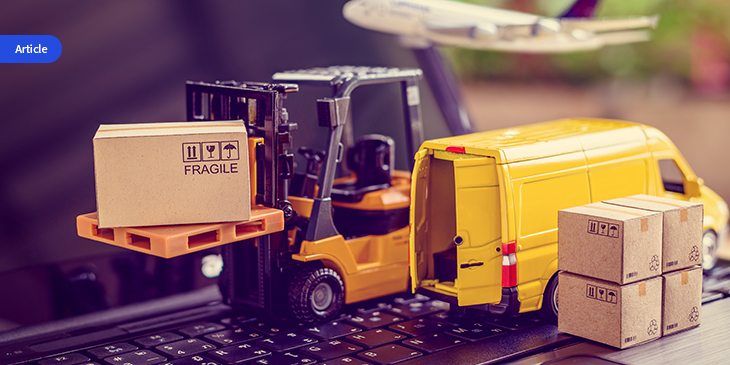Technologies to Help you Avoid Supply Chain Disruptions
If you're like most businesses, supply chain challenges have put a kink in your operations. At least 94% of IT security and procurement decision-makers from companies across the US and EU reported some negative impact as a result of supply chain disruption, a new international survey from the Interos Annual Global Supply Chain Report revealed.
The costs of these interruptions are staggering. The average supply chain snafu can set big businesses back $184 million a year, and that's before your factor in reputation loss.
Supply chain shortages are also starting to hit us on more personal levels. Everything from pet food to the color blue seems to be in flux, leaving us feeling vulnerable and frayed.
Businesses who want to remain proactive in the face of continued and escalating disruption can use these tech tools to soothe and address the uncertainty.
Adopting AI for Real-time Analytics
Even when supply chains seem to hit peak unpredictability, there's still massive amounts of data that can paint a picture of the present — and future. The key is to have the tools needed to collect the right data, analyze it, and take appropriate action.
Once that happens, efficient automation can take over, making less room for human error or mid-transaction roadblocks. Because AI also leverages on-the-fly computing, it's better adept at optimizing everything from delivery routes to material costs.
Deloitte's 2019 Supply Chain Digital and Analytics Survey showed how predictive analytics technologies are already giving companies a competitive edge by:
- Driving cost reduction
- Improving customer experience
- Managing inventory and vendor contracts
- Facilitating strategic sourcing
- Providing real-time product intelligence
- Automating invoicing and warehouse operations
Using Tech to Forecast Demand
For each new COVID-19 variant that surfaces, product demand follows a similar exponential curve. Toilet paper, hand sanitizer, ventilators, and most recently, at-home rapid tests have all faced scarcities as cases increased.
Imagine if hospitals, schools, and businesses could better anticipate when these waves would crest and fall. With more accurate modeling and meaningful data, they could prepare themselves in advance, procuring the equipment and goods they need to stay safe and potentially avoiding a complete shut down.
Automated technologies that can track and produce this level of insight leverage "real-time surveillance capabilities – providing early warnings, forecasting surges, and helping organizations plan coordinated responses and resources where they're needed most," explains Harvard Business Review.
Building Trust with Blockchain
This distributed ledger technology isn't just for financial gain. It also offers global suppliers a way to be more transparent and informed.
Because transactions made on the block are instantly recorded and forever immutable, it encourages integrity. Mistakes and misdealings can't be erased, fraudulent or counterfeit goods are easier to trace, and suppliers who engage in questionable practices can be more easily flagged.
Food suppliers and international grocers like Walmart are already using it to follow goods from origin to final destination, minimizing the risk of major foodborne illnesses and demonstrating to consumers which products are the most sustainable.
IDC predicts 25% of OEMs will leverage blockchain to source spare parts by 2023, leading to a 60% increase in the accuracy of usable parts and a 45% reduction in expedite costs.
On a more positive takeaway, the supply chain is the ultimate manifestation of our interconnectedness. What happens in one distant corner of the world can be felt everywhere. By harnessing and using advanced tech with intention, we have the best opportunity to stay linked and decrease the chaos.


